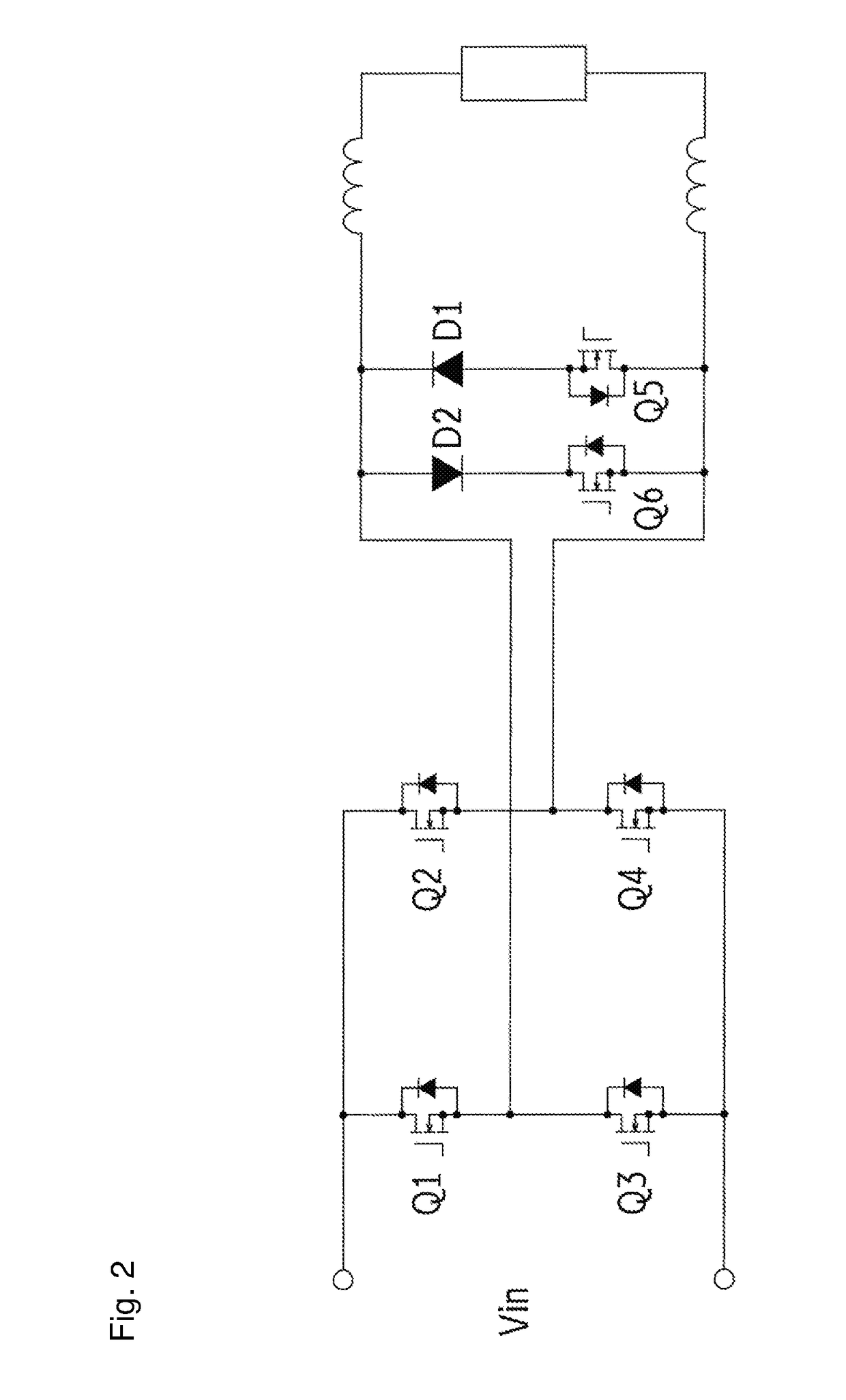Inverter circuit and power conversion device
a technology of inverter circuit and power conversion device, which is applied in the direction of dc-ac conversion without reverse, efficient power electronics conversion, emergency protective circuit arrangement, etc., can solve the problems of large parasitic capacitance, poor reverse recovery characteristic of built-in diodes, and damage to each device, etc., to suppress abnormality generation, excellent effect, and suppress overvoltag
- Summary
- Abstract
- Description
- Claims
- Application Information
AI Technical Summary
Benefits of technology
Problems solved by technology
Method used
Image
Examples
embodiment 1
[0043]FIG. 3A and FIG. 3B each are a circuit diagram illustrating an example of a power conversion device including an inverter circuit. FIG. 3A illustrates a power conversion device 1 including an inverter circuit 10 of Embodiment 1, and FIG. 3B illustrates a power conversion device including a conventional inverter circuit for comparison. The power conversion device 1 illustrated in FIG. 3A is used in a system such as a solar power generation system, and includes the inverter circuit 10 that receives a DC voltage output from a power source such as a solar battery (not illustrated) in an input part to convert the received DC voltage to an AC voltage, inductors L1, L2, and outputs the AC voltage converted by the inverter circuit 10 from an output part to an electric power load 13 through the inductors L1, L2. The DC voltage received by the power conversion device 1 that includes the inverter circuit 10 is converted to a suitable voltage by a converter (not illustrated) such as a DC-...
embodiment 2
[0052]FIG. 5A and FIG. 5B each are a circuit diagram illustrating an example of a power conversion device including an inverter circuit. FIG. 5A illustrates a power conversion device 2 including an inverter circuit 20 of Embodiment 2, and FIG. 5B illustrates a power conversion device including a conventional inverter circuit for comparison. The power conversion device 2 illustrated in FIG. 5A includes the inverter circuit 20, and inductors L1, L2, and outputs an AC voltage converted by the inverter circuit 20 to an electric power load 23 through the inductors L1, L2.
[0053]The inverter circuit 20 illustrated in FIG. 5A includes a full-bridge inverter 21, and a short circuit part 22. Configurations of the power conversion device 2 and the inverter circuit 20 of Embodiment 2 other than the short circuit part 22 are similar to the configurations of the power conversion device and the inverter circuit of Embodiment 1, and therefore for the similar configurations, Embodiment 1 should be r...
experiment 1
[0058]Now, a result of an experiment for simulatively applying a surge voltage in the inverter circuits according to the above embodiments will be described as a simulation test. As the simulation test according to Experiment 1, a phenomenon that occurred in a case where voltage input to the inverter circuit 20 described with reference to FIG. 5A started was confirmed. Experiment 1 was performed on condition of input voltage (DC): 370 Vdc, output voltage (AC): 202 Vac, rated power output: 5.5 kw, switching frequency: 20 kHz, inductors L1, L2: 700 μH. For comparison, the experiment was performed for the conventional inverter circuit illustrated in FIG. 5B along with the inverter circuit 20 of Embodiment 2 illustrated in FIG. 5A on the same condition.
[0059]FIG. 6A and FIG. 6B each are a graph illustrating an experimental result for the inverter circuit. FIG. 6A and FIG. 6B each are a graph illustrating a change with time of a drain-source voltage Vds6 of the switching element Q6 in a ...
PUM
 Login to View More
Login to View More Abstract
Description
Claims
Application Information
 Login to View More
Login to View More - R&D
- Intellectual Property
- Life Sciences
- Materials
- Tech Scout
- Unparalleled Data Quality
- Higher Quality Content
- 60% Fewer Hallucinations
Browse by: Latest US Patents, China's latest patents, Technical Efficacy Thesaurus, Application Domain, Technology Topic, Popular Technical Reports.
© 2025 PatSnap. All rights reserved.Legal|Privacy policy|Modern Slavery Act Transparency Statement|Sitemap|About US| Contact US: help@patsnap.com



